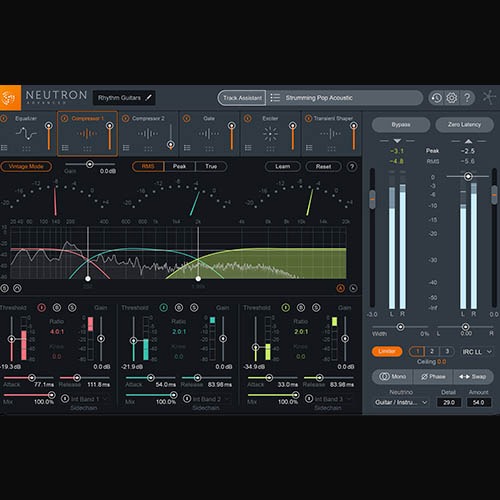

In Neutron 3, we improved the Masking Meter design from the previous two versions by directly overlaying the audio information from both selected EQs on top of one another, making it even easier to see where frequency collisions are occurring. iZotope said it’s up to users to use their judgment about whether that loudness is good or bad in each instance. Two similar frequencies from different tracks will boost that loudness and trigger the masking meter. Now you can adjust the sensitivity to the input signal which will listen to incoming loudness. This masking meter has a fresh look and upgraded algorithm. In the new Module Interface, you can find an updated Masking Meter. Image 2, see the multiband capability highlighted in the second zone Masking Meter This allows you to work more naturally, while at the same time reducing on-screen clutter in the more complex modules. If you want to get more surgical, you can easily add additional frequency bands by clicking right on the spectrum at the top of the UI. Now, in each of Neutron 3’s multiband modules, you start with a broad frequency spectrum with a simple set of controls. This was sometimes overwhelming to users because it felt like Neutron was a more complex tool than necessary for most mixing projects.

In Neutron 2, there were controls visible that may not always have been needed. Image 1, see dropdown menus and more screen space Additionally, now you can make each module multiband (see image 2 below) rather than that being the default setting.

In the prior versions, you could access controls underneath the spectrum. This method looks a lot cleaner and dedicates more screen space to the frequency spectrum.
#Izotope neutron ableton series#
Each module’s parameters can be accessed and adjusted in a floating box and a series of dropdown menus (see image 1 below). The Module Interface here works more like Nectar 3 than the prior versions of Neutron. This section looks and operates in a different way than the prior iteration Neutron 2. The largest part of the plugin is occupied by the Module Interface where you can adjust individual parameters of each effects module. On the far right is the I/O panel where you can adjust level and stereo controls. Below that is the Signal Chain where you can add or remove effects modules, and change their order. The Global Header is where you can title each plugin for a given track, access the presets/assistant features, and options. There are four main sections – the Global Header, Signal Chain, I/O Panel, and the Module Interface (refer to the chart below). First thing’s first – the GUI (general user interface).


 0 kommentar(er)
0 kommentar(er)
